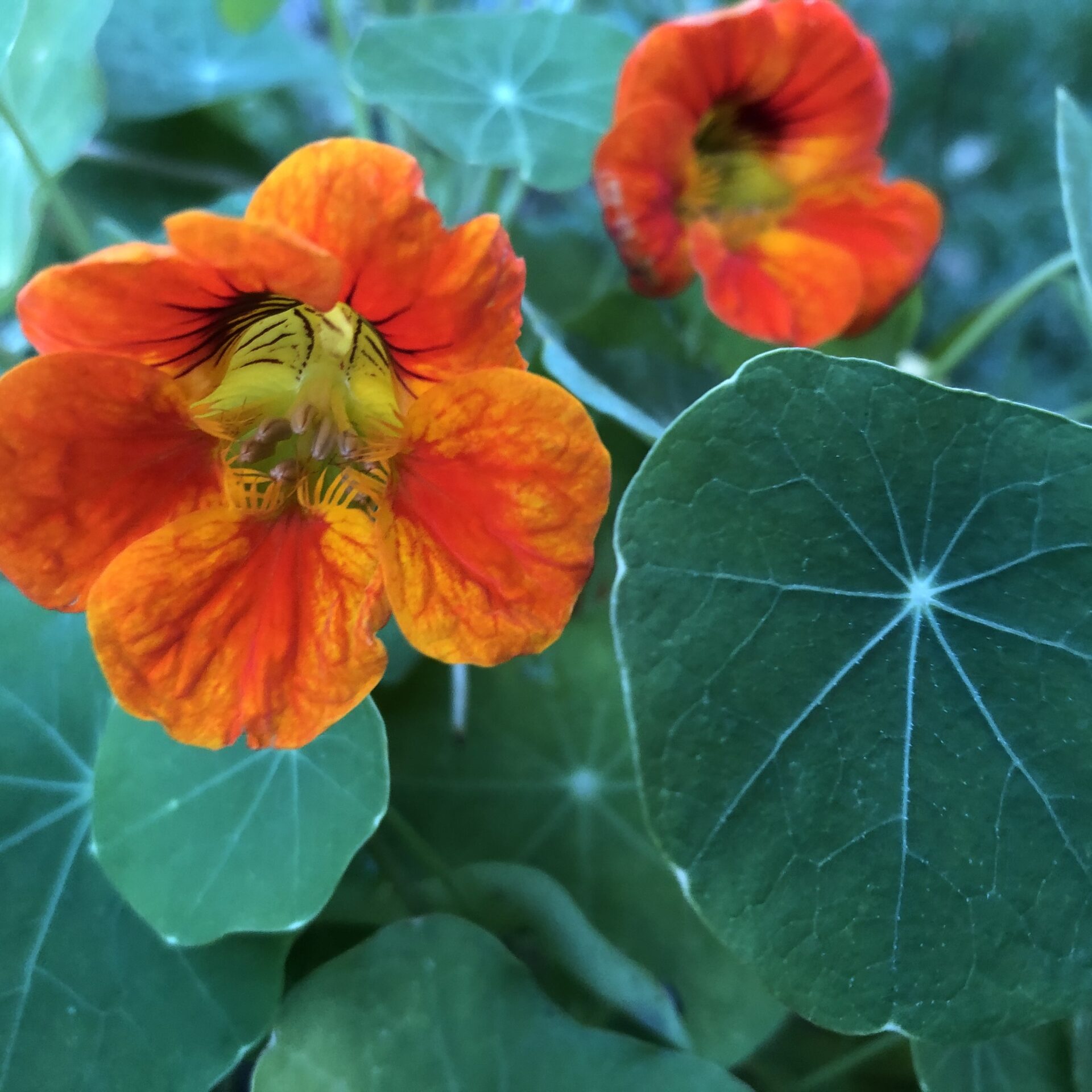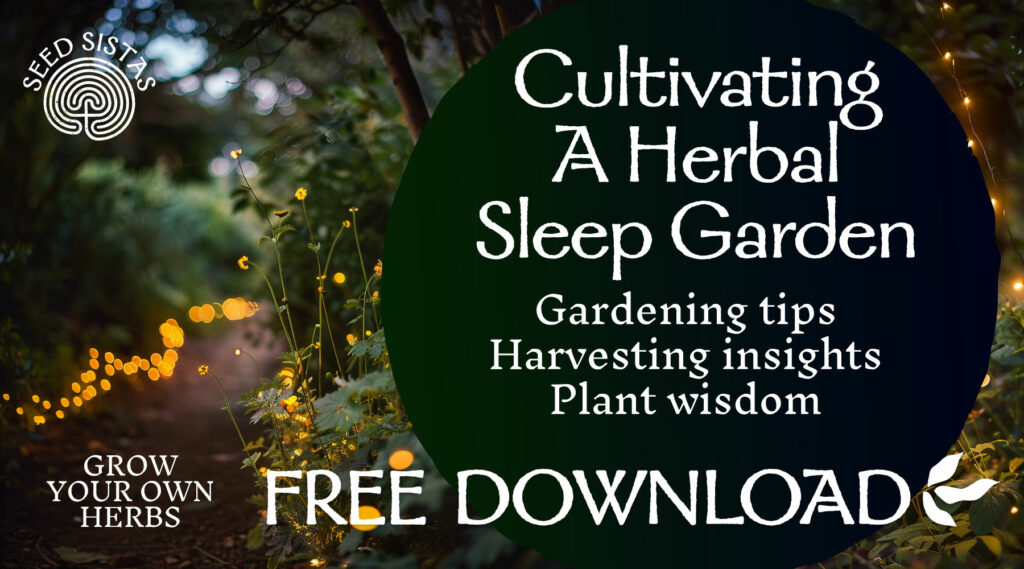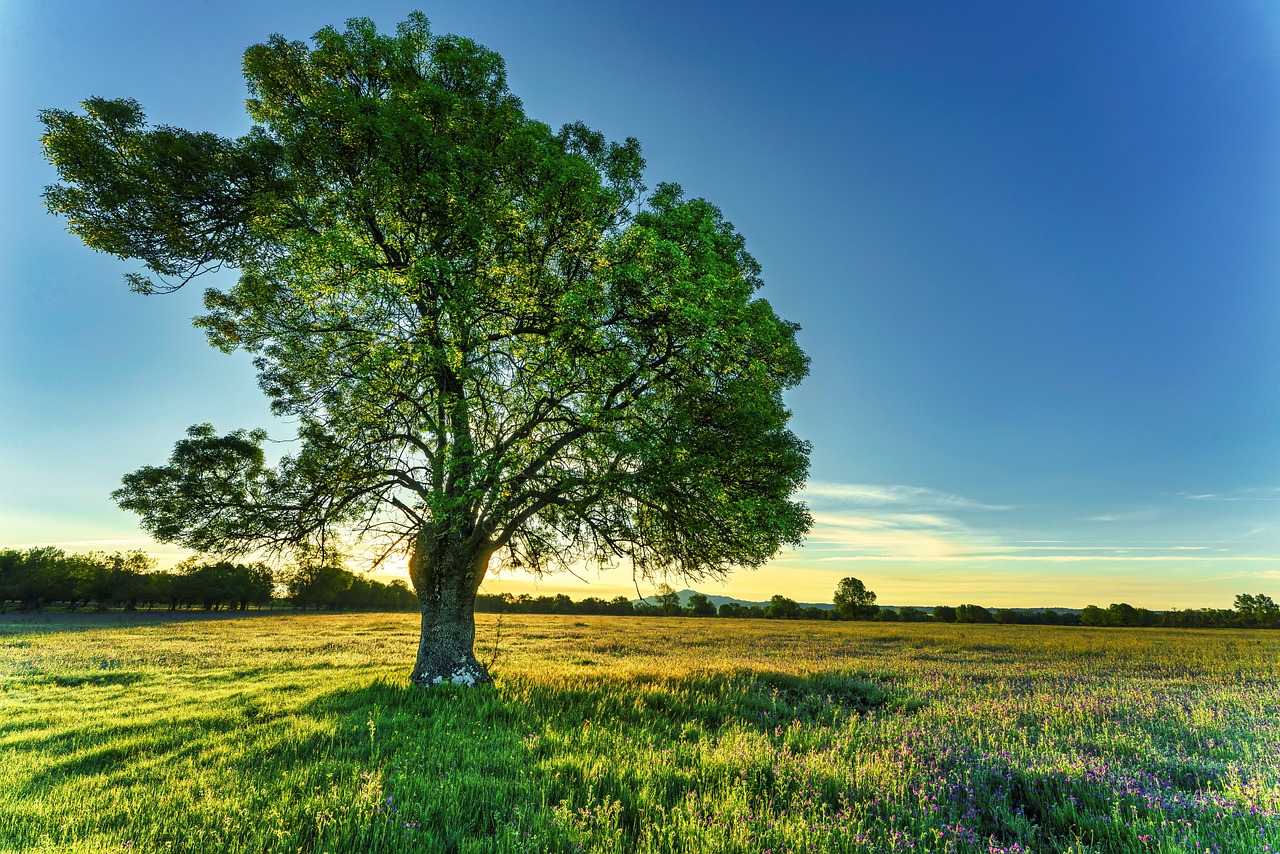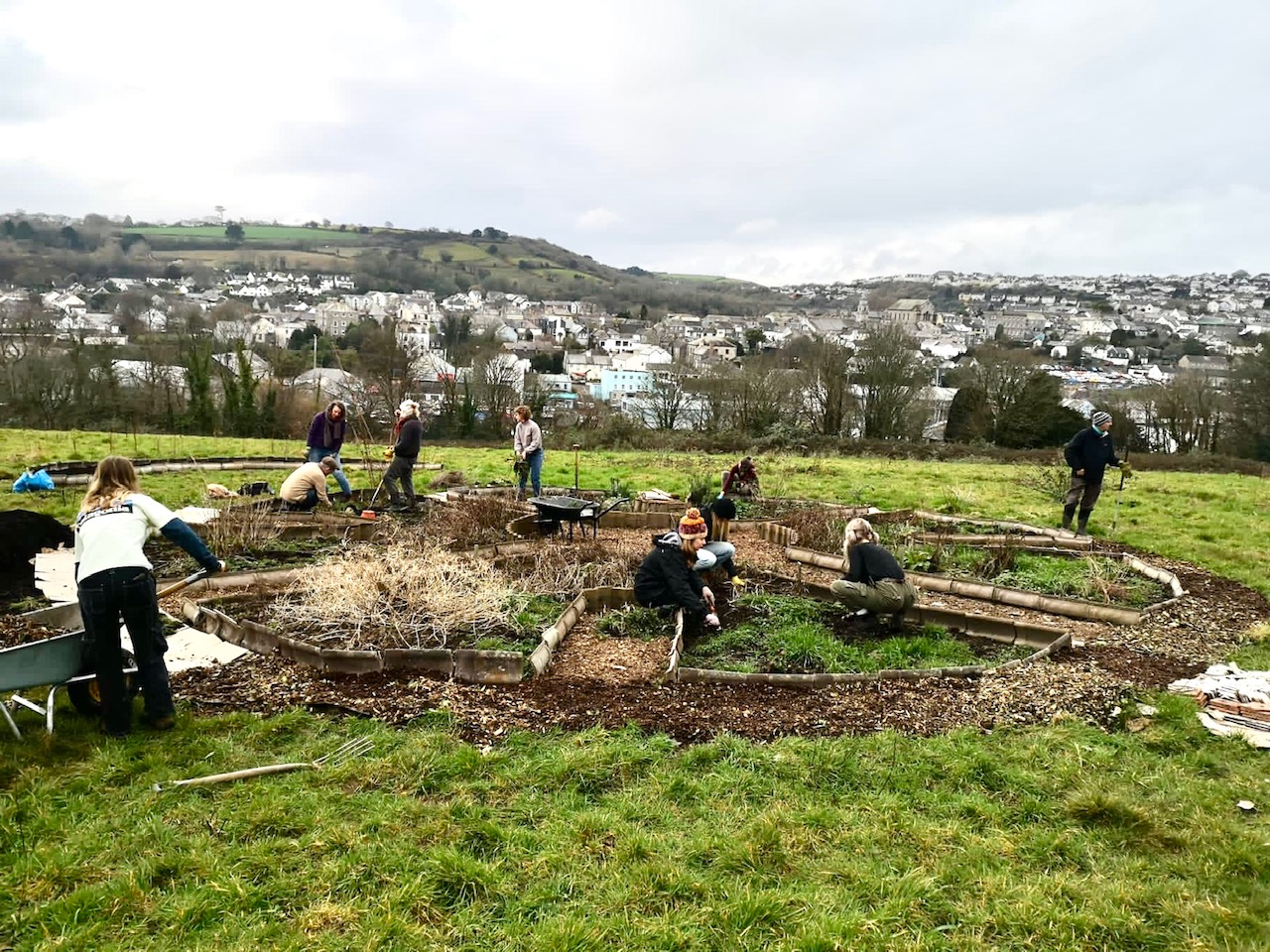Medicinal and Edible Benefits of Nasturtiums
by the Seed SistAs
The vibrant and versatile flowers of nasturtium have been honoured and adored for centuries, and are not to be overlooked as merely a cheery garden flower. The striking pops of colour don’t just give us joy, but also provide us with medicine, food and even art appreciation. Growing nasturtiums is relatively easy as they don’t mind poor soil, and can be grown in pots as well as around the garden, making them a fantastic way to enjoy the peppery flavour of nasturtiums while adding a gourmet touch to your culinary creations. Plus, the medicinal and edible benefits of nasturtiums are abundant!
In addition to large, round leaves, nasturtiums’ bright yellows, oranges and reds blossoms have a 5-petal trumpet-like shape. Thus, making them perfect to both attract bees and butterflies in a pollinator-friendly garden, or keep pests, for example, black fly, away in a vegetable garden. At different times in history and across various lands, the nasturtium has been considered a vegetable, an herb, a flower and a fruit.
History and Folklore of Nasturtium
 The plant first arrived in Europe to Spain in 1569, brought with the Spanish botanist Nicolás Monardes, who wrote extensively about all the plants and animals he collected and studied during his travels in South America. For the Incas of Peru, nasturtium was valued as both an edible and medicinal herb; in particular, for cuts and respiratory conditions.
The plant first arrived in Europe to Spain in 1569, brought with the Spanish botanist Nicolás Monardes, who wrote extensively about all the plants and animals he collected and studied during his travels in South America. For the Incas of Peru, nasturtium was valued as both an edible and medicinal herb; in particular, for cuts and respiratory conditions.
The Swedish botanist and taxonomist, Carl Linnaeus named them Tropaeolum majus because the vibrant petals reminded him of an ancient Roman tradition where they would set up trophy poles (tropaeum), which stems from the Greek word tropaion on which the armour and weapons of those defeated by the Roman army, were hung. To Linnaeus, the leaves looked like shields, and the red flowers looked like blood-stained helmets. Perhaps this is why nasturtium is often associated with bravery, strength and courage to overcome challenges.
There was also love in the mix of these bright flowers in ancient Greece; the plants represented Eros, the god of love. In the Victorian era, the flower was a symbol of romance, both as a gift of someone’s affection, or to attract passion into their lives. During World War I and II, Nasturtiums were grown to provide a much needed source of Vitamin C straight from the garden.
In some cultures, the bright colours of nasturtium displayed vibrant energy, especially as a way of honouring the power of the sun in celebratory rituals. In other traditions, the herb is a protective charm used to ward off evil spirits, and to bring good luck when grown in gardens.
Growing Tips for Nasturtium
 You can easily make nasturtiums feel right at home in a garden; in fact, they flourish with a little neglect! With over 80 different plants belonging to the Tropaeolum genus, nasturtiums are both perennial and annual flowering species. The different varieties include trailing plants, climbers and bushy plants for borders, and are also beneficial to companion planting choice for ground cover around a vegetable patch.
You can easily make nasturtiums feel right at home in a garden; in fact, they flourish with a little neglect! With over 80 different plants belonging to the Tropaeolum genus, nasturtiums are both perennial and annual flowering species. The different varieties include trailing plants, climbers and bushy plants for borders, and are also beneficial to companion planting choice for ground cover around a vegetable patch.
Here’s what makes them tick:
- Sun Lovers: Nasturtiums bask in the sunlight, so find them a sunny spot in your garden.
- Well-Drained Soil: They’re not too picky about soil, but good drainage is key to happy Nasturtiums.
- Planting: Sow nasturtium seeds directly into the ground after the danger of frost has passed in the spring. You can also start seeds indoors 4-6 weeks before the last frost date and transplant them outdoors once the weather warms up.
They will love to climb, crawl, and brighten up every corner of your garden!
Medicinal Benefits of Nasturtium
Not just a pretty face! Both the leaves and petals of the nasturtium plant are packed with nutrition, containing high levels of various vitamins. When consumed, the plant improves the immune system, tackling sore throats, coughs, and colds, as well as bacterial and fungal infections with some super potent antimicrobial compounds. These plants also contain high amounts of manganese, iron, flavonoids, and beta carotene. Studies have shown that the leaves have antibiotic properties, and suggest that they are the most effective prior to flowering.⠀
In medicinal herbalism, nasturtium is mostly known as an expectorant and disinfectant. With antibacterial, anti-fungicide and antibiotic properties make the funky flower an amazing plant to help relieve infections, both internally and externally, as in disinfecting wounds and cuts. Its high content of vitamin C, together with other phytonutrients, make it a good herb to treat scurvy.
Drinking nasturtium tea made from the flowers and leaves can have a soothing effect by helping to reduce stress and anxiety, thereby boosting your immune system. Simply, having them in your garden can enhance your creativity and energy levels!
Eating Nasturtiums
“Spice up ur life n salads with a hot peppery nasturtium hit……!
These are the spicy leaves of the Tropaeolum majus plant, which is in the Brassicaceae or cabbage/mustard family. A close relation to watercress.⠀
For a peppery palette, nasturtium leaves, stems, and flowers offer a delightful peppery zing, like nature’s very own seasoning!
Nasturtium flowers
Nasturtium flowers have a bit of the spiciness of the leaves, but they’re not usually as potent as the leaves. These vibrant flowers come in a range of hues, from sunny yellows to fiery oranges and rich reds, and can be used for eating or culinary decoration, especially for a summer salad. Usually, the paler-yellow flowers are mildest, and the more intense dark reds stronger in flavour.
The flowers can be eaten both as buds or in full bloom, and are easy to eat as simply plucking them off when needed! Like any flower, they’ll wilt quickly, so place them in water if there’s a delay in adding them to a salad, dessert or to brighten up any dish.
Nasturtium Vinegar Recipe – A sharp peppery salad dressing
Ingredients:
1 heaping cup of freshly harvested nasturtium flowers⠀
6 freshly harvested nasturtium leaves⠀
1 sprig of fresh rosemary⠀
3 blades of fresh chive & 3 blossoms⠀
1 tsp of whole peppercorns⠀
Organic apple cider vinegar⠀
Simply put all the ingredients into a jar and cover with the vinegar for 2 weeks.⠀
Nasturtium leaves
Nasturtium leaves generally have the best flavour when they’re tender and young. As the day goes on, the spicier they can become, so if you prefer them milder in taste, pick them earlier in the day. Collect the leaves at any time of the growing season, just make sure you leave plenty on the plant so it can photosynthesise.
The leaves and flowers contain high amounts of mustard oils, which is what gives their spicy, peppery bite. When used in dishes, add them in the last minutes so they don’t lose their flavour through overcooking. Alternatively, you can chop them up to add to vinaigrettes, sauces, and dips, or for larger leaves, you can stuff them as you would for grape leaves.
Nasturtium Pesto Recipe
Ingredients:
50 nasturtium leaves (or double if small)
¼ cup pistachios (or your favourite nut)
½ cup olive oil
½ cup Parmesan cheese
A pinch of red pepper (optional)
Salt and pepper to taste
Instructions:
- Rinse and shake dry the lively leaves.
- Toast pistachios in a dry pan over medium heat for 2-3 mins. Don’t let ’em burn!
- Load the food processor with leaves, chop finely.
- Add toasted pistachios, blend finely.
- Invite Parmesan, red pepper, and half the olive oil. Blend into harmony.
- Adjust consistency with more olive oil. Taste and season to your liking!
Nasturtium pods
In addition to utilising nasturtium’s leaves and flowers, the seeds or pods are also edible. Nasturtium pods are typically harvested when they are still young and springy, as mature pods turn yellow and the seed hardens, developing an unpalatable, hard, and flavourless texture. You can find them growing in groups, hiding on the stems underneath the foliage.
Often referred to as ‘poor man’s capers’, they’re a brilliant, less expensive substitute for capers, and can be preserved by fermenting them in brine and salt. It’s worth noting that the pods have a crisp, semi-aqueous consistency, containing a nose-tingling pepper and mustard-like punch – so might not be to everyone’s tastes, although they mellow out when pickled.
 Nasturtium Capers Recipe
Nasturtium Capers Recipe
Ingredients:
Nasturtium seeds (ripe and green)
Vinegar (white wine vinegar or apple cider vinegar)
Salt
Instructions:
- Harvest nasturtium seeds when they are still green and not fully mature. You can do this by gently plucking the seeds from the plant, making sure they are clean and free from any dirt or debris.
- After rinsing the seeds to remove any dirt or insects, drain and air dry for a little while to ensure there’s no excess moisture.
- Place the cleaned nasturtium seeds in a clean, sterilised glass jar.
- Add a mixture of vinegar and salt to create a brine solution. You can use approximately 1/2 cup of vinegar and 1-2 teaspoons of salt for every cup of nasturtium seeds, but you can adjust these proportions to suit your taste.
- Ensure that the nasturtium seeds are fully submerged in the brine solution. You can place a weight on top to keep them under the liquid. Seal the jar with a lid.
- Allow the seeds to ferment in the brine for at least a week or longer. The longer they ferment, the more they will develop a caper-like flavour. You can taste them occasionally so they reach your desired level of tanginess.
- Once the nasturtium seeds are ready, you can keep them in the refrigerator, and they’ll last for several months if stored properly.
Nasturtiums not only stand out a visual treat for any gardener, but their medicinal and edible benefits of Nasturtiums makes them indispensable. So, if you haven’t grown these little treasures, it’s time to add them to your garden or balcony!
These blog articles are herbal education resources, produced by the Seed Sistas. Gain insights and join us in the evolution of healthcare, please do leave a comment or question. Wellbeing empowerment for all…







